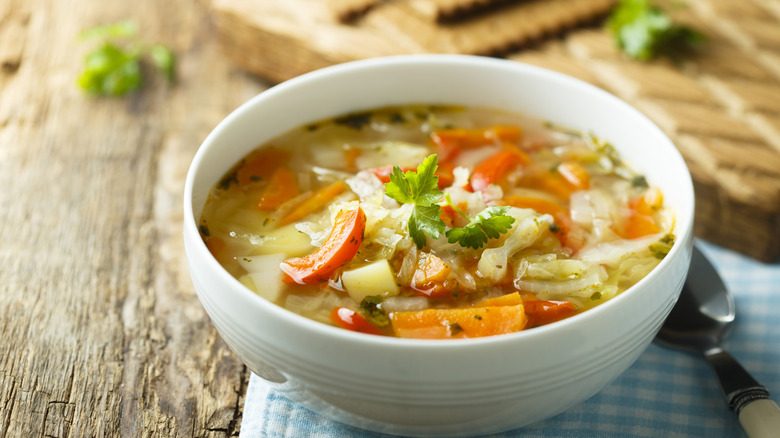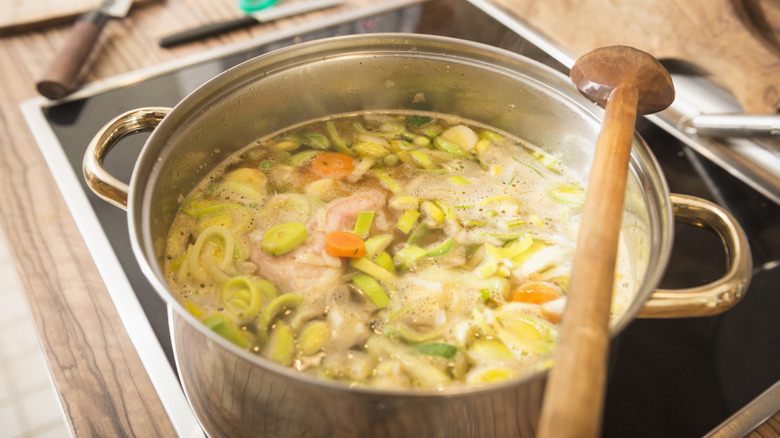Prevent Mushy Vegetables In Your Soup By Following One Simple Tip
The cold months are synonymous with soup. While smooth, blended soups like creamy roasted tomato are essential to the season (and a required component of a grilled cheese lunch), others, like a classic sick-day chicken noodle, rely on the integrity and texture of their solid veggies. There is nothing more dismal than a morass of mushy carrots, celery, and onion bobbing along in your broth after you've come in from the frigid cold.
There are a few common soup slip-ups to avoid when brewing the snow day staple. Mushy vegetables are a major mistake that can be easily avoided. Order of operations is key. To ensure your comfort food isn't too soft, take into account how long it takes each vegetable to cook. Most cooks know that a base of aromatics like onions, carrots, celery and leeks cooked in a fat like butter, is essential to a flavorful soup or stew. The ideal technique is all about not overcooking those veggies.
Stop soup setbacks
Drop your vegetables in the pot in the right order so you don't end up ordering takeout. In a soup recipe shared on Bon Appétit, chef Molly Baz suggests using one batch of vegetables to flavor the broth. The aromatic broth can then be strained, and then more carrots and celery tossed in and cooked to perfection for bright color and firm texture. You can also take a cue from this method by simply adding vegetables to your pot one type at a time.
Denser vegetables like potatoes, rutabaga, turnips, and other root veggie varieties, as well as firm broccoli, cauliflower, fennel, kale, chard, squash and okra can spend a little more time cooking, and can be added to your dish earlier on in the soup process. Meanwhile, don't rush to incorporate asparagus, corn, spinach, carrots, green beans, or peas. These vegetables cook quickly, and should be left until the end of the production.

